How Did Babylon Influence Ancient Near East History?
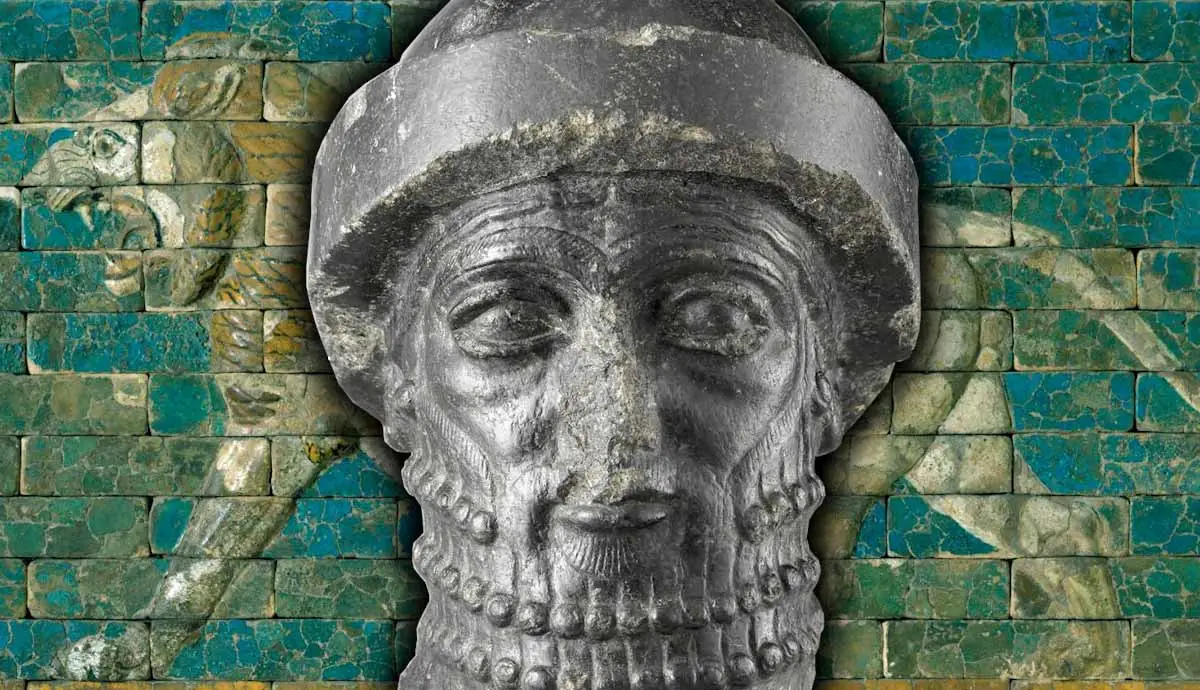
Ancient Babylon was inhabited by several different ethnic groups that all shared a common culture. The Babylonians greatly influenced the ancient Near East.
Today, the word “Babylon” generally conjures negative connotations. This is likely due to the popularity of the “whore of Babylon” from the book of Revelation in the New Testament of the Bible. Or perhaps others know the Babylonians as the people who enslaved the Kingdom of Judah in the book of 2 Kings in the Old Testament of the Bible. The reality is that many different ethnic groups ruled the ancient city of Babylon, and Babylonia — the region it was in. Amorites, Kassites, and Chaldeans were among the most important ethnic groups that ruled Babylon and made it one of the most influential states in the ancient Near East. The Babylonians excelled in several areas, foremost of which were law, science, architecture, and of course war.
Babylon and Cuneiform Dynasty
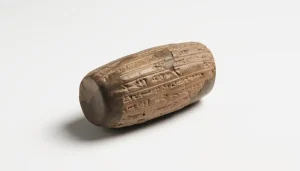
Cylinder Inscription of Nebuchadnezzar II, Neo-Babylonian Dynasty, Reign of Nebuchadnezzar II (604-562 BCE), via Rijksmuesum, Leiden
Modern scholars often consider Babylon’s historical importance to have begun during the First Dynasty of Babylon (c. 1894-1595 BCE), also known as the Amorite Dynasty. The Amorites were a Semitic-speaking ethnic group who migrated to Babylon from the north, quickly adopting Mesopotamian/Babylonian culture. Although the Amorites spoke a language similar to Akkadian, they adopted Akkadian for their written texts in the cuneiform script. Once the Amorites established their dynasty and adopted the Akkadian language, it did not take long for them to exert their influence in the realm of law.
Putting the Law into Writing: Hammurabi’s Law
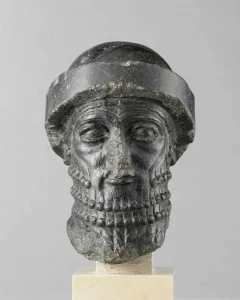
Sculpture of an Amorite Prince, First Dynasty of Babylon, c. 1792-1750 BCE, via the Louvre, Paris
Laws had existed before the Amorites, but written or codified laws were quite rare. Most laws were simply known through tradition and settled by judges through precedent. This changed when Hammurabi (ruled c. 1792-1750 BCE), the sixth king of the Amorite dynasty, came to power. As will be seen later, Hammurabi was a warrior king, but his greatest legacy was the law code he had inscribed on a black diorite stela. Hammurabi’s law code is the best preserved of its type from the ancient world, giving modern scholars a glimpse into ancient Near Eastern society.
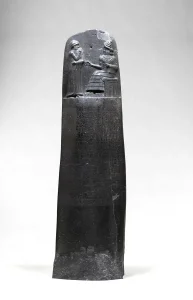
The Law Code of Hammurabi, First Dynasty of Babylon, Reign of Hammurabi (c. 1792-1750 BCE), via the Louvre, Paris
The law code covers the subjects of family, property, criminal, and commercial law, noting how a person’s class affects their judgement. In Amorite Babylon, there were the property-owning freemen known as the awilum and just below them on the social ladder were the non-property-owning dependents, mushkennum. At the very bottom of society were the wardum, or slaves. Punishments could be quite harsh, especially for those who committed offenses against the gods or the state.
One important section of the code noted the following: “If a seignior stole the property of the gods or the palace, that seignior shall be put to death; also the one who received the stolen goods from his hand shall be put to death.”
The codification of laws proved to be a major step forward in the development of civilization in the ancient Near East. Later Mesopotamian peoples followed Hammurabi’s lead, arguably influencing the Israelites. Many biblical historians believe that the Covenant Code of Exodus 20:22-23:19 was influenced by Hammurabi’s code due to the similar language the two texts share. From Israel, the idea of written laws then spread throughout the Near East and Europe, combining with other traditions.
Babylonian Science and Architecture
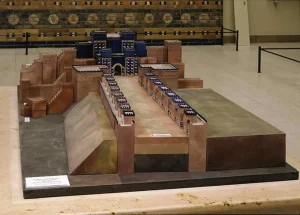
1:100 Scale Model of the Processional Way and Gate of Ishtar in Babylon, Neo Babylonian (original), Reign of Nebuchadnezzar II (604-562 BCE), via the Staatliche Museum, Berlin
The Babylonians inherited much of their science, math, and architecture from earlier Mesopotamian peoples, which they then disseminated to other peoples in the Near East. It is important to note that, in many ways, science in the ancient Near East was very different than it is today. Magic and religion were intertwined in every aspect of Babylonian science, and the Babylonians did not practice theoretical science — they did not develop theorems or proofs. With that said, Babylon was the site of incredible scientific scholarship, especially in math and astronomy.
Babylonians utilized a sexagesimal system of counting (based on 60), which they inherited from the Sumerians. The system was advanced enough to include fractional sexagesimal numbers and a positional system of numerical writing. As advanced as the system was, it could also be a bit unwieldly. Division could only be done as multiplication with the reciprocal divisor, so multiplication tables had to be developed. Eventually, powers and roots were also developed. Modern scholars know so much about Babylonian math because the Babylonians were such meticulous recordkeepers. Thousands of mathematical texts were written in ancient Babylonian, with many now housed in Museums around the world.
Babylonian Astronomy and Astrology
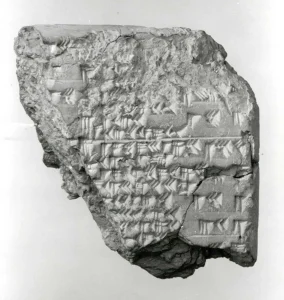
Cuneiform Astronomical Tablet from Babylon, Babylonian-Seleucid, fourth to second century BC, via the Metropolitan Museum of Art, New York
Perhaps the best known but least understood Babylon science was astronomy and astrology. The modern idea of astrology is similar to the ancient Babylonian version in name only, though, as the Babylonians concept was different in function. Originally, astrology was subordinate to and based on astronomy. However, by the end of the second millennium it became popular with the Kassite dynasty. Babylonian astrology was not concerned with personal fortunes as it is today, but was used for the good of the state. Babylonian kings would consult priests who divined omens from the stars concerning war, diplomacy, and agriculture among other things.
The art, or science, of astrology was based on the even older science of astronomy. The Sumerians were the first Mesopotamian people to have an interest in the universe and began plotting it, naming the celestial bodies after their deities. Priests, who doubled as scientists, made observations from the ziggurats, which they recorded on cuneiform tablets. Astronomy became very important in Babylon in the sixth century BCE during the Neo-Babylonian dynasty, with scientists using their observations to make calendars. The Babylonian calendar was fairly accurate, but the scientists had to add an extra month when necessary to equalize the lunar and solar years. Babylonian astronomers had an immense impact on later cultures. The names of the twelve months of the Neo-Babylonian calendar were later adopted by the Judeans and Syrians. But even more important were the Greek astronomers who traveled to Babylon during the Hellenistic period, learning their trade from Babylonian scientists.
Babylonian Pharmacology and Chemistry
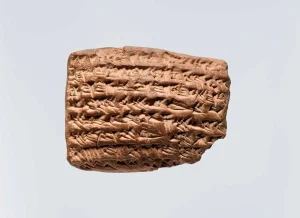
Akkadian Cuneiform Healing Tablet from Sippar, Neo-Babylonian or Achaemenid Persian, Late First Millennium BCE, via the Metropolitan Museum of Art, New York
The Babylonians made great strides in the field of medicine, although their surgical methods were far less advanced than that of their contemporaries in Egypt. While the Egyptians were conducting complex surgeries and writing about them, the Babylonians focused on protochemistry. One of the earliest and most remarkable known Babylonian chemists was a woman named Tapputi-Belatekallim. This woman was mentioned in a cuneiform tablet from the rule of the Kassite King Adad-shum-usur (ruled c. 1216-1187 BCE). The first part of the name is her actual name, while the second part is an Akkadian word that is translated as “female overseer of the palace.” Modern scholars believe that her responsibilities were manifold and that one of her primary functions was as the palace’s “perfumeress.”
Many so-called perfume texts were written in the late second millennium BCE in Babylon and surrounding Mesopotamian cities, although few give precise details of the process. Only one known text gives a complete account of the process of maceration and extraction, first with water, then with oil as the base for perfume. These details may indicate that the ancient Babylonians were familiar with sublimation, which is the transition of a solid to gas.
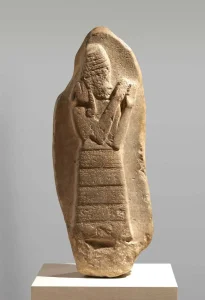
Stela of the Protective Goddess, Lama, Kassite Babylonian, c. 1307-1282 BCE, via the Metropolitan Museum of Art, New York
The Babylonians used their advanced chemistry knowledge to create not just perfumes but also ingredients for their medicines. Perhaps most important, though, was the potential influence they had on later Middle Eastern cultures. The Arab polymath al-Kindi (c. 801-873 CE) wrote the first account of wine distillation, which was an incredible accomplishment. But cuneiform tablets reveal that the Babylonians distilled perfumes more than 2,000 years before al-Kindi, raising the antiquity of the distillation process. It could be that al-Kindi received at least part of his knowledge of distillation from Babylonian oral traditions that were still recounted and commonly referenced by early Arab scholars.
Babylonian Ziggurats
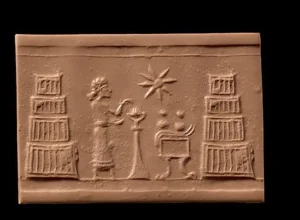
Cylinder Seal Depicting an Offering Scene in Front of a Ziggurat from Ashur, Kassite Babylonian, thirteenth-twelfth century BCE, via the Staatliche Museum, Berlin
Ziggurats are Mesopotamian temple complexes in the shape of rhomboids that are placed one on top of the next, progressively smaller. The earliest ziggurats were built by the Sumerians in southern Mesopotamia during the Uruk Period (c. 3500-2900 BCE), although they were quite primitive. These early ziggurats were little more than a mudbrick platform with a tower on top of it. Ziggurats were multipurpose structures that included several other buildings. They functioned as religious temples, scribal schools, and astronomical observatories. Unfortunately, because they were made primarily of mudbrick, few ziggurats have stood the test of time; but perhaps the greatest one was in Babylon.
King Nebuchadnezzar II (ruled 604-562 BCE) of the Neo-Babylonian empire was responsible for commissioning the Entemenaki ziggurat. Dedicated to the patron god of Babylon, Marduk, the Entenmenaki ziggurat inspired people well into the modern era. The fifth-century BCE Greek historian, Herodotus, described the Entemenaki ziggurat:
“On the summit of the topmost tower stands a great temple with a fine large couch in it, richly covered, and a golden table beside it. The shrine contains no image and no one spends the night there except, as the Chaldeans who are the priests of Bel say, one Assyrian woman, all alone, whoever it may be that the god has chosen.”

Glazed Brick Relief from the Ishtar Gate, Neo-Babylonian, Reign of Nebuchadnezzar II (604-562 BCE), via the Metropolitan Museum of Art, New York
Many scholars believe that the Entemenanki ziggurat, which functioned as the centerpiece of the incredible city, inspired the biblical Tower of Babel (Gen. 11:1-9). The city encompassed more than 2,200 acres and had an outer wall that formed a triangle perimeter of more than eleven miles. The most incredible part of the city was the beautiful and ornate eighth gate into the city, known as the Ishtar Gate. The gate was dedicated by Nebuchadnezzar to the Mesopotamian goddess of love and war, Ishtar, and served as a powerful reminder of the king’s wealth and power.
Babylonian Empires and Geopolitics
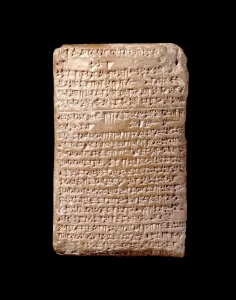
Akkadian Cuneiform Letter from Babylonian King Burnaburiash II to Egyptian King Tutankhamun, Kassite Babylonian, Reign of Burnaburiash II (c. 1359-1333 BCE), via the British Museum, London
All the different Babylonian dynasties shared an acumen for geopolitical maneuvering and a taste for imperial policies that would influence later Near Eastern peoples. Hammurabi was the first ruler to make Babylon the seat of imperial power, which he accomplished by about 1750 BCE. After consolidating his power in Babylonia, Hammurabi defeated the northern Mesopotamian states of Larsa, Eshnunna, Mari, and Assyria. Although Hammurabi’s empire was ephemeral, as his Amorite successors were unable to hold it, it provided a template for later Mesopotamian empires.
The Babylonians reached their geopolitical apex under the Kassite dynasty (c. 1474-1159 BCE). The Kassites were another outside group who adopted the Akkadian language and Babylonian culture when they took control of the city. The Kassite rulers retained their distinct names and used their language in day-to-day use, but in every other respect they were Babylonian. The Kassites first made contact with the Egyptians when Thutmose III (ruled c. 1460-1340 BCE) was the pharaoh.
The Babylonians used their diplomatic cache to become members of the Great Powers club along with Egypt, Hatti, Alashiya, Mitanni, and later Assyria. Once in the Club, the Babylonians controlled many trade routes from farther east that brought valuable lapis lazuli to the other members as well as horses from the nearby Zagros Mountains. In return, the Babylonians received gold from Egypt, which they used to create a proto-gold standard. It is also important to point out that all diplomatic correspondence between the Great Powers was conducted in the language of Babylon, Akkadian cuneiform.

Copper Blade, Amorite, seventeenth century BCE (First Dynasty of Babylon), via the British Museum, London
The final Babylonian dynasty to leave a geopolitical legacy on the region was the Neo-Babylonian dynasty (626-539 BCE). The Neo-Babylonian dynasty may have been relatively short-lived, but its King Nebuchadnezzar II extended its borders to include the Levant (Syria-Palestine) to the “brook of Egypt.” As told in the Old Testament book of 2 Kings 24-25, Nebuchadnezzar II defeated a rebellious Judah in 597 BCE and deported a large share of its population. Nebuchadnezzar then installed Zedekiah as his puppet, but the latter also chose to rebel against Babylon. The Babylonians responded with brutal efficiency, deporting most of Judah’s remaining population in 587 BCE. Nebuchadnezzar successfully stopped the rebellion. However, in the process, he ensured that his city would be eternally remembered for its brutality.